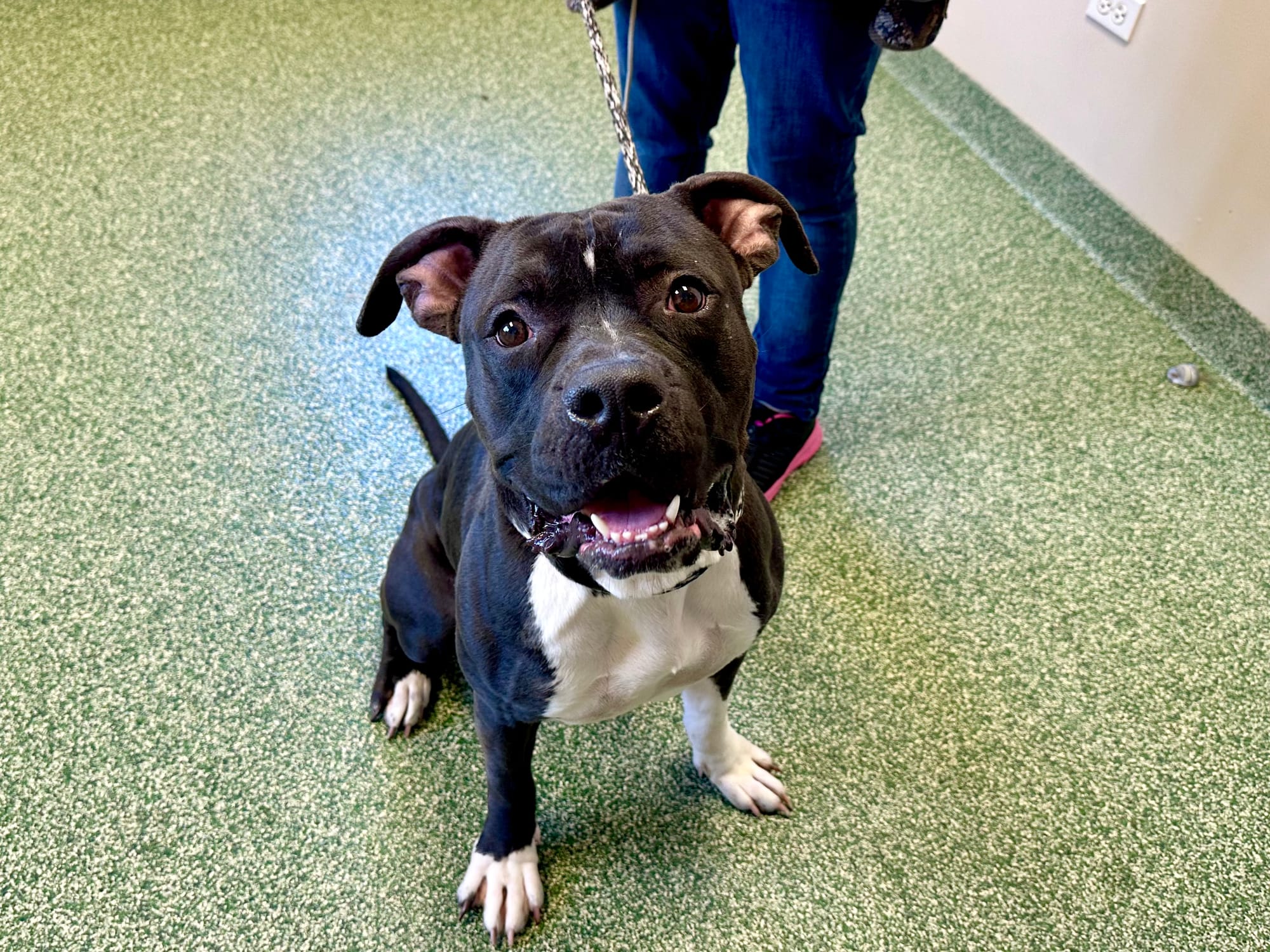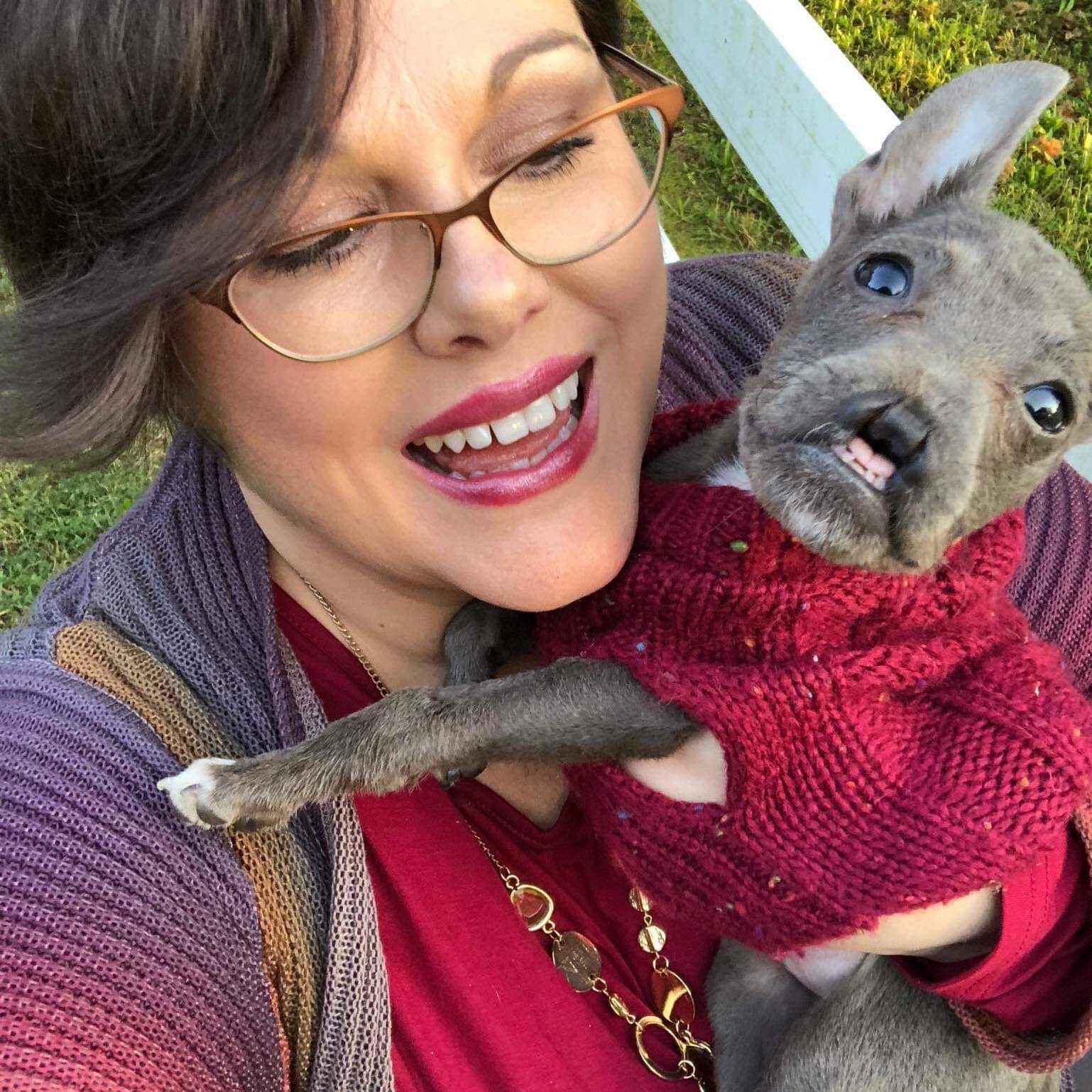Welcome to the ultimate destination for celebrating the unsung heroes of the dog rescue world. At Rescue Spotlight, we're dedicated to highlighting the remarkable journeys of rescue organizations and the incredible individuals behind them.
Whether you seek heartwarming tales of second chances, inspiring stories of rescue missions, or practical insights into the world of dog adoption, you'll find it all here.
Today, we're privileged to interview Rebecca Genauer, one of the devoted people behind NorCal Boxer Rescue You can find a direct link to their Instagram here.
Here is their story:
What inspired you to start or become involved with this rescue organization?
Genauer: NorCal Boxer Rescue was started in 1999, when our founder saw the need for a reputable rescue in our area. Boxers have unique characteristics and medical needs, and they are also a fairly popular breed, so there is a need for specialized rescue. My personal inspiration for becoming involved with NorCal Boxer Rescue was my experience loving a rescued boxer, Walter, who was my first dog. After all he gave me, I felt indebted and wanted to pay it forward by volunteering for a boxer rescue. Of course, every dog since then (and there have been 5 more rescue boxers in my life!) has made me feel only more indebted. So, I am hooked! It also helps that the people involved with NorCal Boxer Rescue have really become like family for me. I am eternally inspired by and grateful for them, and I'm lucky to work alongside them.
Can you tell us about a particularly memorable rescue mission or adoption story that stands out to you?
Genauer: There have been so many! The story that is closest to me right now, is actually my Petey's. Petey was taken in as a stray senior dog at my local shelter in 2021. Their rescue coordinator reached out to us and asked us if we would take him. Senior dogs are among those who most critically need rescue because they are least likely to be adopted from the shelter, plus they often have medical issues that need to be addressed before they can be adopted. NorCal Boxer Rescue agreed to take him, and my mom and I scheduled to pick him up and drive him up to one of the vets our rescue works with. The day before we were supposed to pick him up, the shelter called me and said, "The senior boy is bloating. Can you take him right now? If not, we need to euthanize him." Bloat is a deadly medical emergency; it's fatal within hours if not surgically treated, and the surgery is a major one. I called our medical coordinator to get approval to pick up Petey, and she said it was okay. In doing so, she was basically committing to a $10,000+ medical treatment for a senior, homeless dog with a guarded prognosis. It really was a testament to how much NorCal Boxer Rescue is willing to commit to give a dog a chance at a good life . . . and its a testament to our supporters that we are able to make those kinds of decisions. I rushed to the shelter. Shelter staff were lying with Petey on his kennel floor, and they were worried he would not even survive long enough to reach the vet. The rescue coordinator got in the back seat of my car with Petey, and we went straight to the ER. Amazingly, he survived surgery and a rough recovery at the hospital. He's survived a lot since then (boxer cardiomyopathy, a horrific car crash that temporarily paralyzed him and killed my mom, and treatment for a brain tumor). He is one of the most remarkable, happiest, and beautiful beings I have ever known, and he is here today, playing with his toys right behind me, because NorCal Boxer Rescue saved him when it would have been so easy to have said, "No."
What are some of the biggest challenges you face as a rescue organization, and how do you overcome them?
Genauer: Our biggest challenge is probably a lack of foster homes. We have an impressive - and large! - group of foster families, but the need for fosters is so great that we still always need more. We do our best to encourage people to foster. Fostering is an immensely rewarding activity, and it's directly responsible for saving a dog's life. Many people worry that they won't be able to let a dog go, but our fosters are involved in the approval process for adopters, and I think when a family sees their foster dog go to the perfect home, it gives them a lot of peace of mind and a great feeling of satisfaction. Additionally, as a breed rescue, one of our challenges is that the dogs we take in are inherently resource-intensive. Because healthy, well-mannered, purebred dogs are usually the first to be adopted from shelters, they are usually the last dogs that need rescue. Instead, the purebred dogs that need rescue are typically dogs with significant medical or behavioral needs. They may be older, or they've simply suffered from medical or social neglect. These kinds of dogs are the ones we really work to serve. But they are, by their nature, dogs that require longer and more expensive rehabilitation. In the end, the dogs are able to live wonderful, happy lives with families who adore them. I think our supporters understand this, and we see time and again that they give generously and advocate for our organization.
How do you select the dogs that your organization takes in, and what criteria do you use for adoption?
Genauer: We keep an eye on all northern California shelters for any boxer who is in need of rescue. Once we identify a dog that is in need of rescue, we do ask the shelters for a temperament test to ensure the dog is not dangerous to place in a foster home or with the public. Beyond that, we try to prioritize the dogs who are most in need, meaning they are at highest risk of shelter euthanasia. For adoption, we are looking always to find a good fit between adopter and dog. We try to learn about what the adopter's needs, expectations, and hopes are for their dog, and we make some suggestions of dogs who might be a good fit. We encourage adopters to meet with as many dogs as needed to find the best fit before committing to adding a boxer to their family.
In what ways do you work to rehabilitate and socialize dogs before they are adopted?
Genauer: Every dog that comes into our care receives veterinary care, including the basics (spay/neuter, vaccinations, microchip, heartworm prevention) and often much more. We routinely do diagnostic workups for foster dogs, and treat all kinds of illnesses and injury. We are a foster-based rescue so all of our dogs receive many opportunities for socialization in their foster home. They have a safe and cozy space to decompress, learn house and leash manners, and have positive interactions with people and other animals. Being part of a family is an important part of healing for our dogs. Some of our dogs need more structured behavioral intervention, and we are lucky to work with an amazing, professionally certified behavior consultant. She assesses many of our dogs, some of whom stay with her for a period of weeks (or longer!) for board and train in her home. Other dogs return to their foster homes and she provides guidance through a behavior modification program. We do not use aversive or forceful training techniques with our dogs.
What role do volunteers play in your organization, and how can people get involved?
Genauer: We are 100% volunteer-run! Volunteer foster families house our dogs. Volunteer transporters are responsible for freedom rides from the shelter, as well as driving drive dogs to and from vet appointments. Volunteers process adoption and foster applications, conduct home visits, manage our dogs' records, communicate with veterinarians, mentor foster homes, write grant applications, fundraise on our organizations behalf, and more! There are endless ways for people to get involved and to share their talents! People who wish to foster can submit an application here https://ncbr.org/foster-home-application/, and anyone who wants to volunteer in any other capacity can send an email to info@ncbr.org.
Can you share some success stories of dogs who were once in your care and have now found loving forever homes?
Genauer: One recent story was McQueen's. He was found outside a police station at 2 am. A severely emaciated puppy, he looked like a skeleton. He went to a foster home where he received lots of TLC and eventually reached an appropriate weight. Then, he had a horrible setback when his knees swelled and he became ill. He was lethargic, wouldn't eat, wouldn't stand, and had a fever. He underwent a host of diagnostic tests and remained hospitalized for some time. Eventually, he was diagnosed with immune-mediated polyarthritis. He received treatment, and recovered! He is a wonderful, playful, happy, and sweet little guy, and once he was healthy, it didn't take him long to find his forever home. He lives with four other dogs and human parents who have a soft spot for special needs animals.
How does your organization collaborate with other rescues,shelters, or animal welfare organizations?
Genauer: Most of the dogs we take in are dogs from shelters across northern California. So, we are always in touch with municipal shelters about what their needs are and how we can help. We are Network Partners of Best Friends Animal Society and are diligent about reporting our data to both Shelter Animals Count and the Shelter Pet Data Alliance. We are the only boxer rescue in our region, but we occasionally coordinate with other nearby boxer rescues to do what we can to ensure that boxers in shelters don't slip through any cracks.
What initiatives or programs does your rescue have in place to promote responsible pet ownership and prevent pet homelessness?
Genauer: We have a couple of programs intended to support adopters and owners of senior boxers. One of our programs is called Supporting Our Seniors. It provides financial support to people who adopt senior dogs from our rescue, lowering the barrier to adoption and also helping to ensure that people who adopt senior boxers are able to provide them the often extensive care they need. A similar program we have is called Growing Old With You. It also provides financial support, but to different populations. First, it provides support to people who already own a senior boxer and are considering surrendering their boxer due to the cost of veterinary care. Right now, for instance, we are helping a family whose senior boxer ruptured its cruciate ligament. Second, it provides financial assistance to people who adopt a senior boxer directly from a municipal shelter. Last week we were contacted by somebody who was considering adopting a senior boxer from a local shelter. With our support, she decided to go ahead and adopt him, and our funds will be helping him get some much-needed dental care.
Looking ahead, what are your organization's goals and aspirations for the future?
Genauer: Of course, our dream would be for our organization no longer to be needed! However, until that happens, we hope that we can continue to grow to meet the needs of our community. There are so many boxers in shelters, and it's a struggle to save them all. We'd like to have the human and financial resources to do that within our region of northern California, and even be able to provide more support to shelters in southern California, where the need is even greater. We'd also love to have an even more robust program to support senior dogs and adopters in general.






